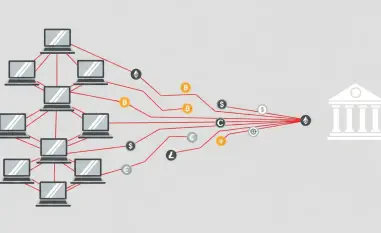Setting the Stage for Security Concerns
Imagine a single breach in a widely used platform cascading into a devastating compromise of sensitive data across multiple high-profile organizations, exposing critical credentials and disrupting operations on a massive scale. This scenario is not a distant possibility but a stark reality in the realm of GitHub account security, a cornerstone of modern software development and collaboration. As a leading code hosting platform, GitHub serves millions of developers and businesses, making it a prime target for sophisticated threat actors seeking to exploit vulnerabilities.
The importance of securing GitHub accounts cannot be overstated, especially given their deep integration with other cloud-based systems and business tools. A breach in this environment can ripple through interconnected platforms, amplifying the damage far beyond a single entity. This review delves into the current state of GitHub security, spotlighting real-world incidents and emerging threats that underscore the urgent need for robust protective measures.
Analyzing GitHub Security Features and Vulnerabilities
Core Security Mechanisms
GitHub offers a range of security features designed to protect user accounts and repositories, including support for multi-factor authentication (MFA), repository access controls, and activity monitoring. These tools aim to safeguard sensitive code and data by ensuring that only authorized individuals can interact with critical resources. Additionally, GitHub provides options for organizations to enforce security policies, such as requiring MFA for all users and limiting repository permissions to specific roles.
However, despite these built-in protections, gaps remain in how these features are implemented or adopted by users. Weak passwords, inconsistent use of MFA, and inadequate monitoring of account activity often leave accounts exposed to exploitation. The platform’s reliance on user diligence to enable and maintain security settings can be a significant weak point, particularly for less experienced users or under-resourced teams.
Integration Risks with External Systems
A defining characteristic of GitHub’s ecosystem is its seamless integration with other platforms like Salesforce, AWS, and Google Workspace, enabling efficient workflows across business environments. While this connectivity enhances productivity, it also introduces substantial risks, as a compromised GitHub account can serve as a gateway to these interconnected systems. Threat actors can exploit stolen credentials or OAuth tokens to move laterally, accessing sensitive data stored in integrated applications.
The complexity of managing permissions across multiple platforms further exacerbates this issue, as misconfigurations or overly broad access rights can go unnoticed until exploited. This interconnectedness demands not only strong security on GitHub itself but also rigorous oversight of how integrations are configured and monitored to prevent cascading breaches.
Performance Under Threat: A Case Study
Breach Dynamics and Initial Access
Examining a recent high-profile incident involving Salesloft, a sales engagement platform, reveals the severe consequences of GitHub account vulnerabilities. Between March and June of this year, threat actors gained unauthorized access to Salesloft’s GitHub account, enabling them to download repository content, add unauthorized guest users, and establish malicious workflows. This initial compromise acted as the entry point for a broader attack campaign targeting interconnected environments.
The breach highlights how even a single point of failure in account security can open the door to extensive unauthorized activity. Attackers used their foothold to manipulate repository settings and lay the groundwork for further intrusions, demonstrating the critical need for robust access controls and real-time monitoring to detect and halt such actions early.
Escalation and Widespread Impact
From the initial GitHub breach, attackers escalated their access into Salesloft’s Drift app and subsequently infiltrated Drift’s AWS environment, stealing OAuth tokens tied to customer integrations. These tokens allowed the extraction of sensitive information, including AWS access keys, passwords, and Snowflake credentials, from customers’ Salesforce instances, alongside limited access to Google Workspace accounts. The scale of affected entities included prominent security vendors such as Tenable, Qualys, Palo Alto Networks, Cloudflare, and Zscaler.
This incident underscores the devastating potential of leveraging stolen credentials to bypass traditional security measures. The ripple effect across multiple organizations illustrates how a breach in one platform can compromise an entire ecosystem, exposing sensitive data and disrupting business operations on a massive scale.
Sophistication of Threat Actors
The perpetrators, identified as part of groups like ShinyHunters and Scattered Spider, showcased a blend of technical expertise and social engineering tactics such as vishing to deceive employees and gain further access. Their ability to combine stolen OAuth tokens with human manipulation points to an evolving threat landscape where attackers exploit both system vulnerabilities and human error. This dual approach makes detection and prevention significantly more challenging for organizations.
The growing prevalence of such sophisticated campaigns signals a shift toward more coordinated and multi-faceted attacks. Organizations must adapt by not only bolstering technical defenses but also educating staff to recognize and resist manipulation tactics used by these advanced adversaries.
Assessing the Broader Implications
Scale of Affected Organizations
The fallout from the Salesloft breach suggests a staggering number of potential victims, with early estimates indicating hundreds of organizations may have been impacted. The breadth of affected entities, spanning various industries and including major cybersecurity players, amplifies the severity of the incident. This widespread exposure of sensitive data poses significant risks to both operational continuity and customer trust.
Beyond immediate data loss, the breach raises concerns about long-term reputational damage for affected companies. Clients and partners may question the reliability of platforms and integrations, prompting a reevaluation of how businesses manage and secure their digital ecosystems in an increasingly interconnected world.
Challenges in Securing Interconnected Environments
Securing GitHub accounts in isolation is not enough when breaches can cascade through integrated systems. The complexity of tracking access across platforms like Salesforce and AWS creates blind spots where unauthorized activity can persist undetected. Current challenges include enforcing consistent security policies across diverse environments and ensuring that integrations do not become conduits for lateral movement by attackers.
Efforts to address these issues are ongoing, with a focus on improving credential management, enforcing stricter access policies, and deploying advanced threat detection tools. However, the dynamic nature of cloud-based integrations means that security must evolve continuously to keep pace with emerging risks and attack vectors.
Looking Ahead: Future Enhancements
Potential Security Innovations
Looking toward the future, advancements in GitHub security could include more robust authentication mechanisms, such as biometric or hardware-based options, to reduce reliance on passwords. Automated anomaly detection powered by machine learning could also play a pivotal role in identifying suspicious activity before it escalates into a full-blown breach. Additionally, stricter default access policies could minimize the risk of misconfigurations by limiting permissions unless explicitly granted.
Such innovations would require collaboration between platform providers, security experts, and user communities to ensure they address real-world needs. Implementing these measures proactively could significantly enhance the resilience of GitHub accounts against increasingly sophisticated threats.
Industry-Wide Collaboration
Combating advanced threat actors necessitates a collective approach, with organizations sharing threat intelligence to stay ahead of evolving tactics. Industry collaboration can help identify patterns of attack, such as those employed by groups like ShinyHunters, and develop standardized defenses to mitigate risks. This shared knowledge base is essential for building trust in cloud platforms and ensuring that security keeps pace with innovation.
Moreover, regulatory frameworks and best practices may need to evolve to enforce higher security standards across integrated systems. Encouraging transparency in incident reporting and remediation efforts can further strengthen the ecosystem, fostering a culture of accountability and continuous improvement.
Reflecting on Lessons Learned
Reflecting on the incidents that unfolded, it becomes evident that a compromised GitHub account could serve as ground zero for catastrophic breaches, as seen in the Salesloft case earlier this year. The extensive damage inflicted across multiple organizations exposed critical flaws in current security practices. Remediation efforts, including those led by Google Mandiant to isolate and secure affected systems, highlighted the importance of rapid response and thorough forensic analysis.
Moving forward, organizations must prioritize actionable steps such as mandating multi-factor authentication, regularly auditing access permissions, and investing in advanced monitoring solutions to detect unauthorized activity. Businesses should also consider conducting regular security training to mitigate social engineering risks. As the threat landscape continues to evolve, adopting a proactive stance with continuous evaluation of security postures and fostering industry partnerships will be essential to safeguard digital assets in an interconnected world.













